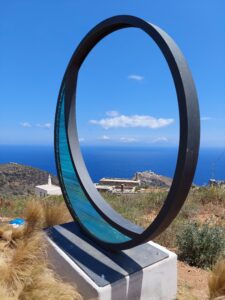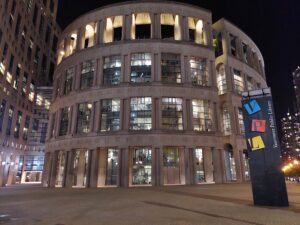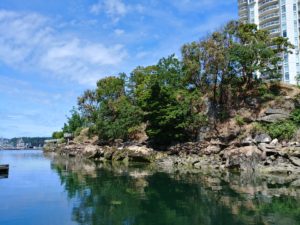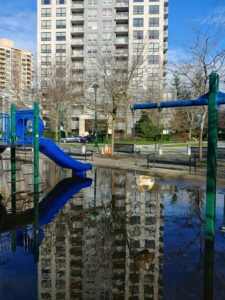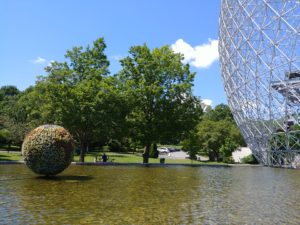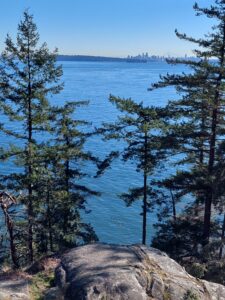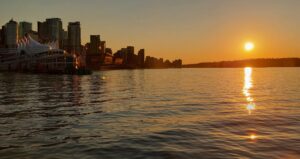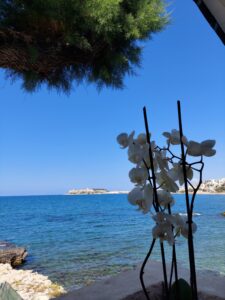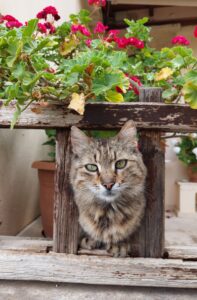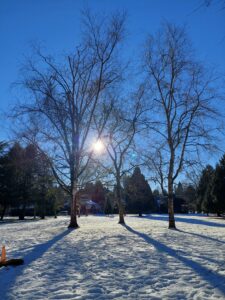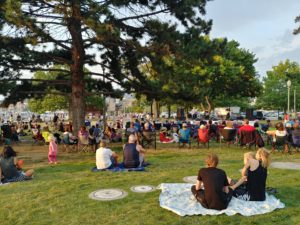New design guidelines from the American Society of Landscape Architects show us how to build them
By Diana Budds Aug 28, 2019, 5:00pm EDT
From: https://www.curbed.com/2019/8/28/20835301/universal-streets-accessible-street-design

Jackson Street, in St. Paul, was recently redesigned to accommodate multi-modal transportation and increase accessibility. The firm Toole Design called for a bike lane protected from cars by a stormwater infiltration swale, a pedestrian island, and tactile cues for visually impaired pedestrians. |Courtesy Toole Design
The fight for more equitable cities is taking to the streets—literally. New street design guidelines from the American Society for Landscape Architecture (ASLA) articulate why.
Last week, ASLA released universal design guidelines for neighborhoods, streets, parks and plazas, playgrounds, and gardens—a range of scales and projects for which landscape architects are regularly called upon to design. By creating this best-practices guide, ASLA is making it easier for designers from all disciplines, elected officials, and everyday people to understand what an inclusive and accessible public realm looks like. More importantly, the guidelines are a call to action.“If we want everyone to participate in public life, we must design and build an inclusive public realm that is accessible to all,” the guidelines state. “Public life can’t just be available to the abled, young, or healthy.”ASLA’s universal design guidelines consider physical disabilities like limited mobility, blindness and low-vision, and Deafness and hardness of hearing; people with neuro-cognitive disorders like dementia and Alzheimer’s disease; those with neuro-developmental disabilities, like autism; and aging people. ASLA defines universal landscapes as accessible, participatory, comfortable, ecological, predictable, multi-sensory, walkable, and predictable.“Access to public space truly is—and always should be—a civil right,” says Alexa Vaughn, a Deaf landscape architect who consulted with the ASLA on the guidelines. “If we continue to design and plan cities that are inaccessible to certain people, we are committing a serious injustice towards these people. This is about guaranteeing the right to public space to all, regardless of dis/ability.”

Bell Street Park, in Seattle, is a shared street that incorporates universal design principles. |Hewitt / MIG|SvR
Accessible streets are particularly important because streets are so foundational to how people get around.“They are the arteries of our cities,” Vaughn says. “Increasingly designers are designing more accessibly and sustainably by thinking of pedestrians and cyclists over cars. Designers can take this a step further by thinking of the disabled body in the streetscape.”The conversation about equity and accessibility in streetscapes often focuses on multi-modal transportation—like redistributing space on car-dominant streets to accommodate pedestrians, public transportation, and protected bike lanes. What comes after “complete streets”—streets that are designed to enable safe access for all users, including pedestrians, bicyclists, motorists, and transit riders of all ages and abilities—is a conversation that has recently animated landscape architecture and urban planning.Transportation and safety advocates are calling for Dutch-style “woonerfs,” or shared streets, in which pedestrians, bikes, scooters, and cars all share the same space with no separate sidewalks or lanes. As Curbed’s urbanism editor, Alissa Walker, has argued, prioritizing the free flow of people leads to safer, more accessible streets for everyone.Americans with Disabilities Act (ADA) guidelines for streets are scant and focus on technical elements, like clear paths of travel and curb ramps, for people with physical disabilities. Other interventions, like tactile pavement—raised bumps on curb ramps—and accessible pedestrian signals—auditory cues that tell blind and low-vision pedestrians when it’s safe to cross—are becoming more common, but aren’t ADA requirements. The ADA’s guidelines don’t take into account quality of experience, or how pleasant and enriching a place is to use, which impacts people with sensory or mental disorders. A noisy, haphazard street might be merely annoying to some people, but to people with certain disabilities, these qualities might make it severely difficult to use.Meanwhile, disabilities are rarely mentioned at all in streetscape design guidelines. But that’s changing.Before consulting on ASLA’s guidelines, Vaughn developed her own concept for accessible streets called “DeafScape,” which applies the concepts of DeafSpace, a 10-year-old architectural approach rooted in how Deaf people experience space, to urban landscapes. She proposed a streetscape with a minimum width of 10 feet and a buffer between the sidewalk and multi-modal roadway composed of landscaping, seating, and bike racks. Her design has rhythm to it, which aids spatial understanding, and looks beautiful.

Alexa Vaughn’s DeafScape concept calls for streets with public seating, vegetation, bright lighting at night, tactile cues, and wide sidewalks. |Courtesy Alexa Vaughn
ASLA’s Universal Streets section incorporates Vaughn’s concepts and picks up where the already-robust guidelines for complete streets leave off by centering people with different ability levels.Universal Streets are multi-modal and include pedestrian islands. ASLA’s guidelines specify wide sidewalks to allow enough room for people in wheelchairs to turn around or rest, and for people using sign language to face each other and communicate without impeding foot traffic.Universal streets also include frequent seating with arms so that people can rest and easily lift themselves up; flexible seating so people can choose where they want to sit; good lighting that minimizes shadows, which can be perceived as grade changes by people with low vision, and glare which affects people with sensory sensitivity. Universal streets have visual patterns to them so that people can easily navigate and understand them, as well as tactile cues for people with low vision.ASLA’s best practices call for areas for socializing, complete with shade and seats, and enclosed areas of refuge for people with sensory processing issues. It suggests trees and plants to help attenuate acoustics. As Alysia Abbot, the parent of an autistic child, wrote in a recent Curbed feature about parks and accessibility, green space is vital for people on the autism spectrum or who have sensory disorders.”We made the case that green infrastructure—the ecological element—should be part of universal design,” says ASLA’s Jaren Green, who co-authored the guidelines. “Nature benefits everyone across abilities. Research shows exposure to nature provides cognitive benefits, improves mood, and creates a sense of greater well-being. If someone is finding accessing or traversing the built environment stressful to begin with, it makes sense to reduce the stress through adding greenery without adding obstacles.”Some of these streets already exist, like Bell Street Park, a shared street in Seattle, and Jackson Street, the recently redesigned thoroughfare in St. Paul.Appropriating assistive design en masse can make the world work better for everyone, a concept designers call the “curb-cut effect.” One of the first-ever curb cuts—those areas where the sidewalk slopes down to meet the street at intersections—was built in Michigan in 1945 to help returning World War II veterans with disabilities. Now they’re common fixtures, which allow people with strollers, suitcases, carts, and more to use sidewalks more easily. Adopting universal streets could lead to a similar effect. Greener streets, more welcoming streets, more places to sit, more places to retreat, more places to just exist would improve quality of life for everyone.“The public realm is the most critical space to design for equity and access simply because it is the largest scale we can work at and it affects the largest amount of people on a daily basis,” Vaughn says. “If we focus on how to design for different bodies in the public realm, we can really move toward creating holistically accessible cities.”





